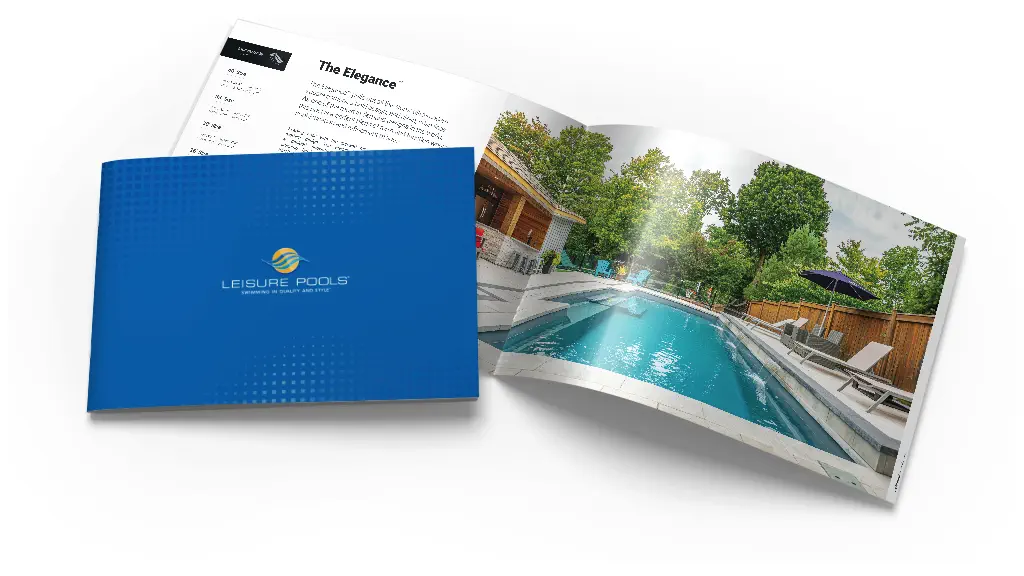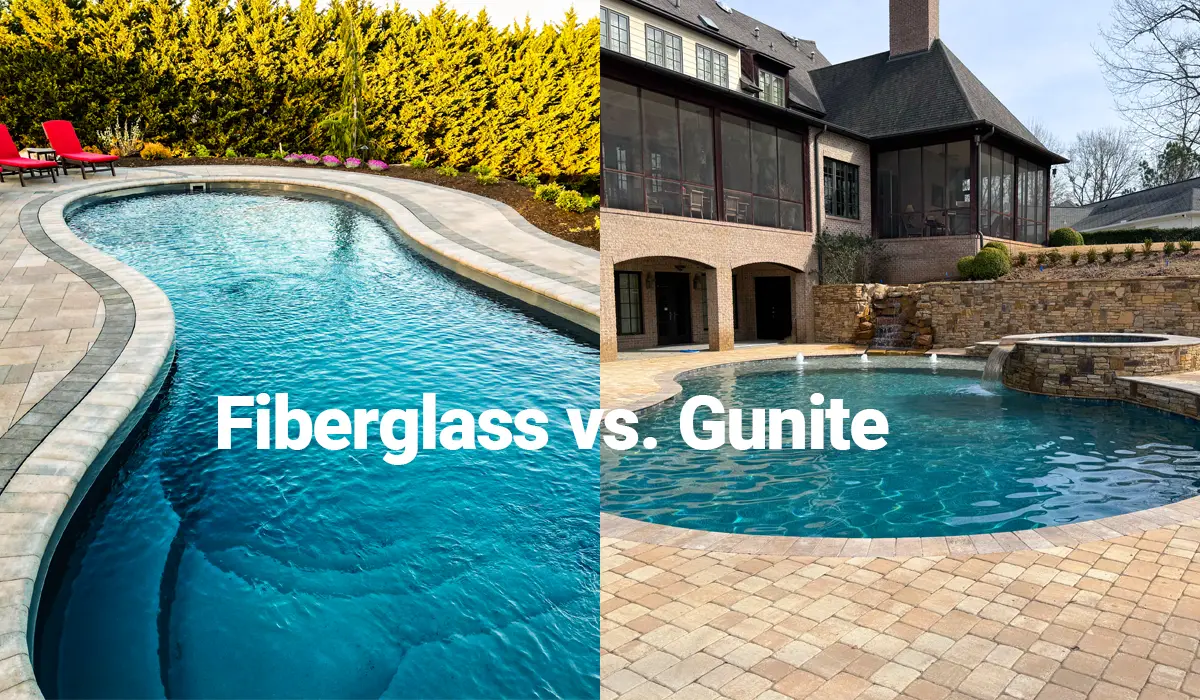
Fiberglass Pools vs. Traditional Concrete Pools: Making the Right Choice for Your Dream Oasis

When you’re in the market for the perfect swimming pool for your dream backyard oasis, two heavyweight contenders step into the spotlight: fiberglass pools and traditional concrete pools. While both options have their strengths, the ultimate decision hinges on your individual needs, budget, and lifestyle. In this comprehensive comparison, we’ll delve into the critical distinctions between a fiberglass pool from Leisure Pools and concrete pools, focusing on cost, maintenance, and installation factors.
Cost Analysis
Your backyard pool journey begins with a consideration of the upfront costs. Fiberglass pools typically present a more budget-friendly initial investment compared to their concrete counterparts, but let’s explore this further.
Fiberglass Pools:
Initial Cost: Installing fiberglass pools is generally more economical upfront, with potential savings on labor and materials compared to concrete pools.
Maintenance Costs: Over the long term, fiberglass pools tend to be more cost-effective due to their smooth, non-porous surface, which resists algae growth and reduces the need for chemical treatments and cleaning. This can translate into lower ongoing maintenance expenses.
Repairs: Fiberglass pools are known for their durability, requiring minimal repairs over time to maintain their pristine appearance and functionality.
Concrete Pools:
Initial Cost: The construction of concrete pools typically involves a higher upfront expense due to labor, materials such as rebar and concrete, and other factors. The materials and labor required for constructing a concrete pool can contribute to higher upfront expenses, which may not be feasible for some homeowners with budget constraints.
Maintenance Costs: Concrete pools often incur higher long-term maintenance costs as their porous surface can foster algae growth, necessitating more chemicals and frequent cleaning to maintain their pristine appearance.
Repairs: Concrete pools can develop cracks, leaks, and surface imperfections over time, resulting in costly repairs and potentially more frequent maintenance compared to fiberglass pools.
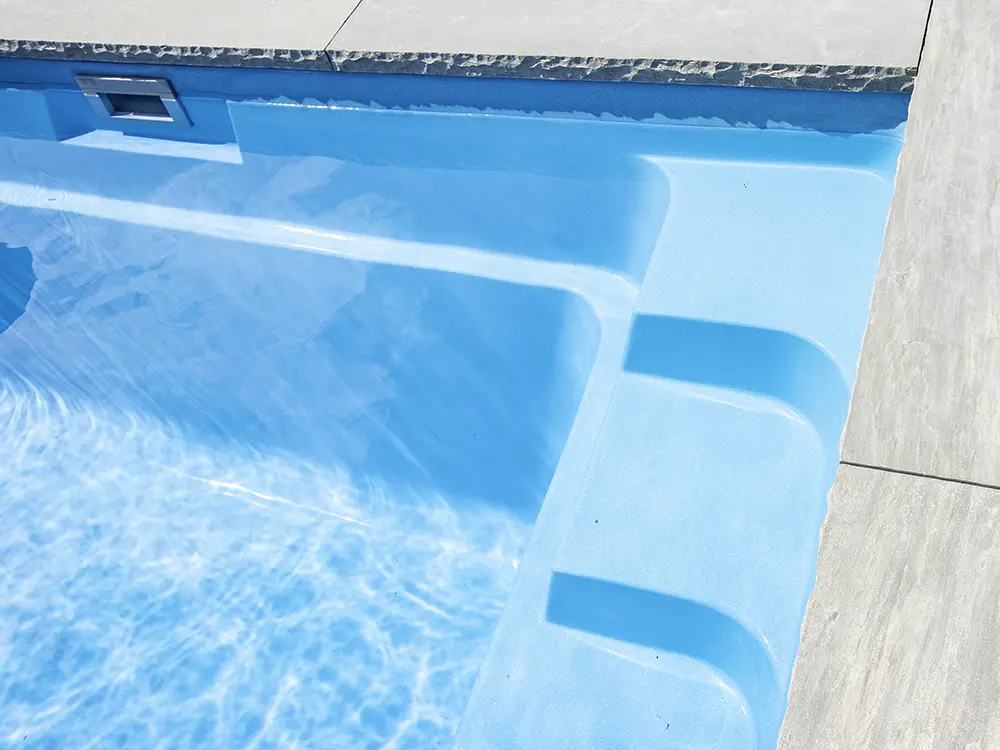
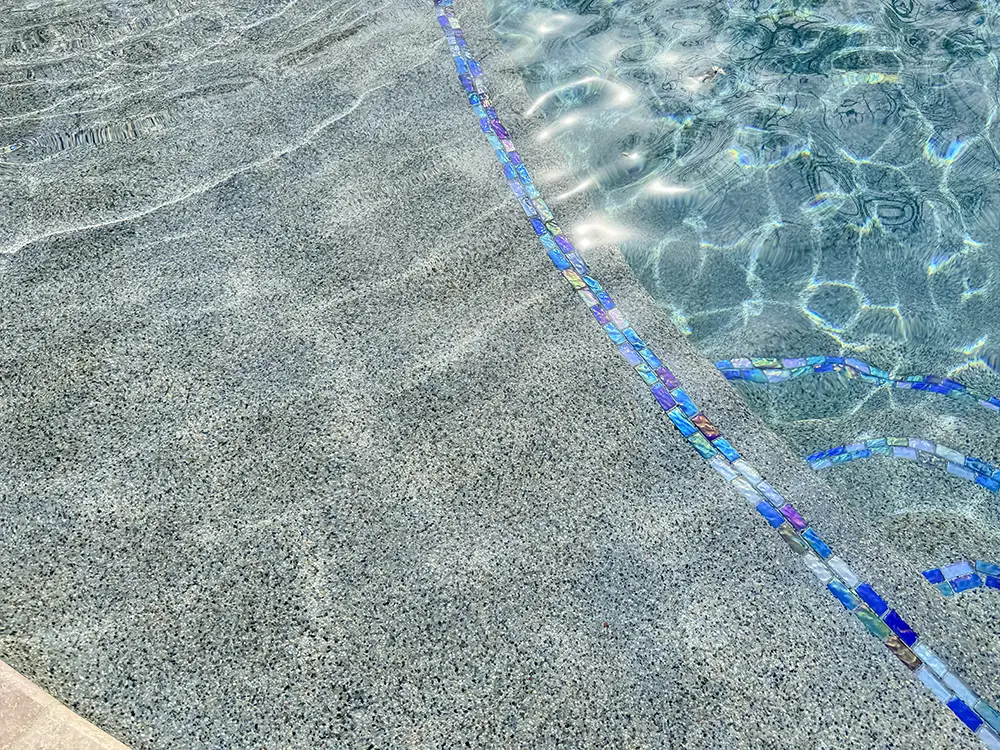
Maintenance Considerations
Maintenance is a key factor in determining the overall cost and time investment required for your pool.
Fiberglass Pools:
Smooth Surface: Thanks to the technology employed, the smooth, non-porous surface of fiberglass pools inhibits algae and contaminants’ growth, reducing both time and expenditure on cleaning and chemical treatments.
Stain Resistance: Fiberglass pool surfaces are less susceptible to staining, minimizing the need for stain removal and ongoing maintenance.
Minimal Resurfacing: Unlike concrete pools, fiberglass pools do not require frequent resurfacing or repainting, leading to substantial long-term savings.
Concrete Pools:
Porous Surface: Concrete pools’ porous surfaces can easily harbor algae and microorganisms, necessitating more extensive cleaning and chemical treatments.
Frequent Brushing: To prevent algae growth and maintain a clean appearance, concrete pool owners often need to regularly brush the pool walls and floor.
Replastering: Concrete pools typically require replastering every 7-10 years, which can be a costly and time-consuming process.
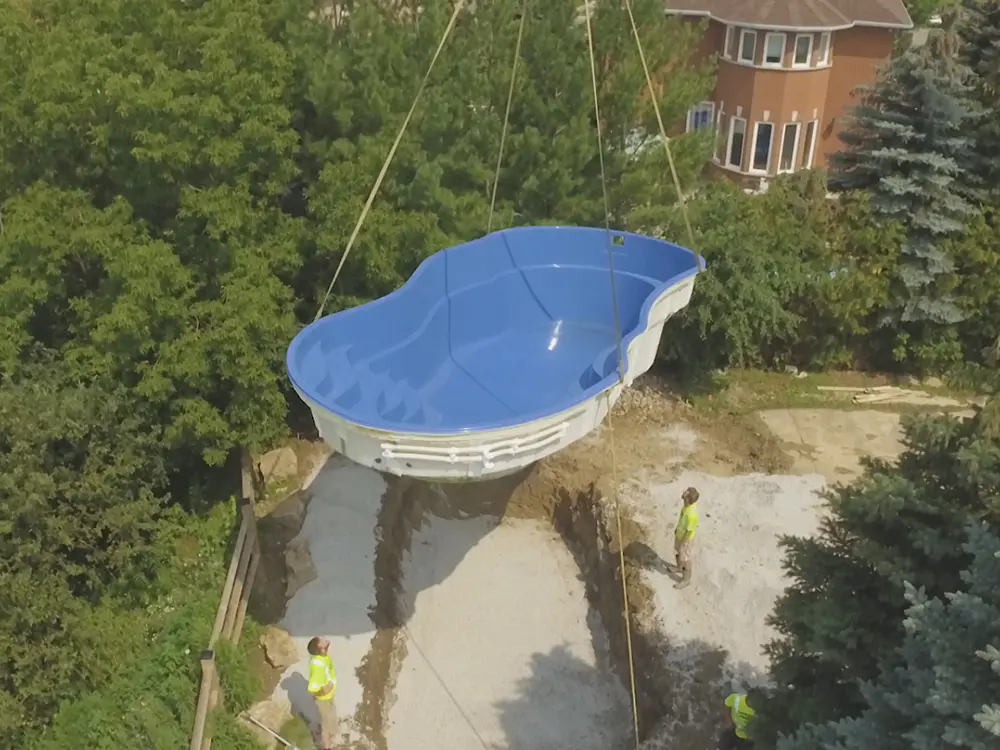
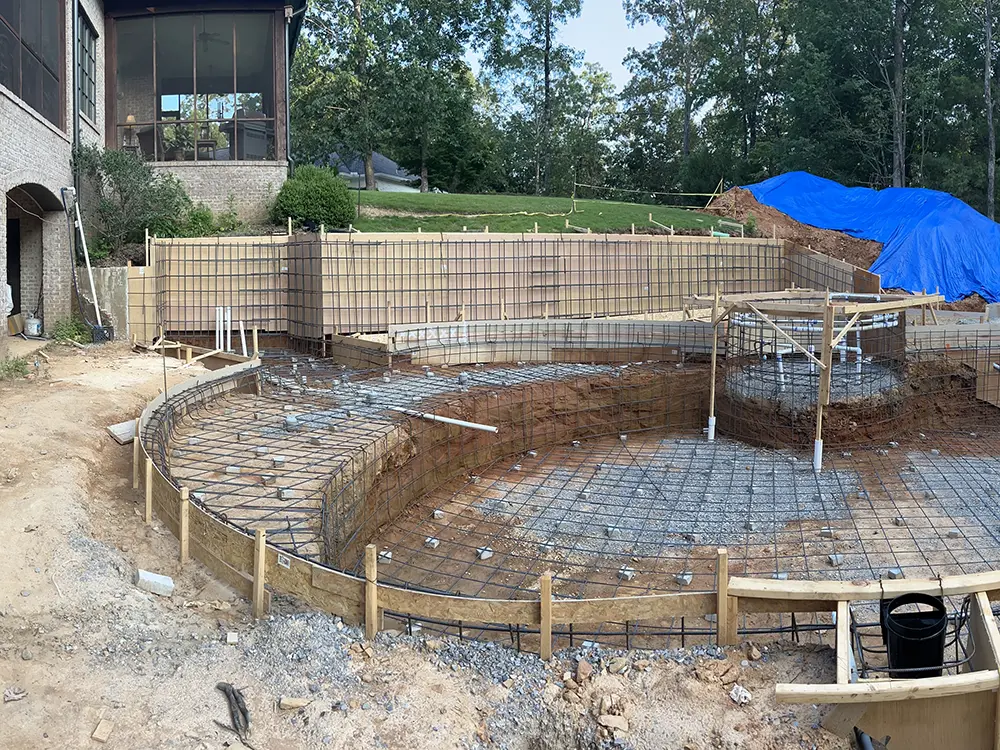
Installation Insights
The installation process for fiberglass and concrete pools differs significantly.
Fiberglass Pools:
Efficient Installation: Fiberglass pools, being pre-manufactured, can be installed relatively quickly, typically within a few weeks.
Limited Site Disruption: Installing a fiberglass pool involves less excavation and yard disturbance, making it a faster and less disruptive process.
Smooth Aesthetics: Fiberglass pools boast a smooth and consistent finish right from the start.
Concrete Pools:
Extended Installation Duration: Building a concrete pool is a time-intensive process, frequently spanning several months.
Significant Yard Disturbance: The excavation process for a concrete pool typically involves extensive disruption to your yard, potentially impacting your outdoor space for an extended period.
Design versatility: It should be noted that concrete pools offer unparalleled design versatility, allowing homeowners to customize the shape, size, and features according to their preferences. However, it’s worth highlighting that fiberglass pools can also be uniquely designed to complement the specific layout and aesthetic of one’s backyard, providing an alternative option for those seeking a personalized pool experience.
In the clash between fiberglass pools and traditional concrete pools, there’s no one-size-fits-all answer. Your choice should align with your budget, maintenance preferences, and timeline.
Ultimately, both fiberglass and concrete pools offer the joy of having a luxurious swimming pool in your backyard, delivering years of relaxation and enjoyment for you and your loved ones. It’s all about striking the right balance that aligns with your lifestyle and preferences, ensuring your pool experience is as delightful as possible.
At Leisure Pools, we take pride in providing backyard swimming pools that combine the durability and low-maintenance benefits of fiberglass with exceptional design versatility, allowing you to create a personalized oasis that perfectly suits your desires. We invite you to bring your backyard dreams alive today. Reach out to a local dealer to discover your well-deserved Life of Leisure.

